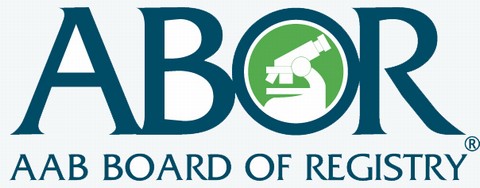CDC Health Advisory
The advisory provides information and recommendations on appropriate laboratory testing to health care providers seeing patients with dengue-like illness who have recently traveled to Puerto Rico, Key West, Florida or international dengue-affected areas. Specimens from patients with acute febrile illness, who returned from dengue-affected areas within the past 14 days, should be submitted to their local or state health department, if the health department laboratory offers dengue testing. State health departments with the capacity to test for dengue include: AZ, CA, CT, FL, NY, PR, and TX. If the local or state health department does not perform dengue testing, specimens should be sent directly to the CDC laboratories in San Juan, Puerto Rico. A completed CDC Dengue Case Investigation Form must accompany the specimens for the appropriate testing to be performed.
Summary: Dengue virus transmission has been increasing to epidemic levels in many parts of the tropics and subtropics. Travelers to these areas are at risk of acquiring dengue virus and developing dengue fever (DF) or the severe form of the disease, dengue hemorrhagic fever (DHF). The Centers for Disease Control and Prevention (CDC) strongly advises that health care providers in the United States should: 1) consider DF and DHF when evaluating patients returning from dengue-affected areas--both domestic and abroad--who present with an acute febrile illness within two weeks of their return, 2) submit serum specimens for appropriate laboratory testing, and 3) report all presumptive and confirmed cases of DF and DHF to their local or state health department.
Background
Dengue transmission has been increasing to epidemic levels in many parts of the tropics and subtropics where it had previously been absent or mild. Dengue-affected areas are widely distributed throughout Africa, Asia, Pacific, the Americas and the Caribbean. This calendar year, more than 50 countries have reported evidence of dengue transmission; including 17 countries in Asia, 17 in the Americas, 10 in Africa, seven in the Caribbean, and one in the Pacific. With an extensive dengue outbreak occurring in Puerto Rico and evidence of continued transmission in Key West, Florida, travel to certain domestic locations may also pose a risk for the traveler. The mosquitoes known to transmit dengue virus, Aedes aegypti and Aedes albopictus, are present throughout much of the southeastern United States and infected returning travelers may pose a risk for initiating local transmission.
Symptoms
Dengue virus infections can manifest as a subclinical infection or DF, and may develop into potentially fatal DHF. DF is a self-limited febrile illness that is characterized by high fever plus two or more of the following: headache, retro-orbital pain, joint pain, muscle or bone pain, rash, mild hemorrhagic manifestations (e.g., bleeding of nose or gums, petechiae, or easy bruising), and leukopenia. Because the incubation period for dengue infection ranges from 3 to 14 days, the patient may not present with illness until after returning from travel. Clinical management of DF consists of symptomatic treatment (avoid aspirin, NSAIDS and corticosteroids, as they can promote hemorrhage) and monitoring for the development of severe disease at or around the time of defervescence. A small proportion of patients develop DHF, which is characterized by presence of resolving fever or a recent history of fever, lasting 2–7 days, any hemorrhagic manifestation, thrombocytopenia (platelet count ≤100,000/mm3), and increased vascular permeability, evidenced by hemoconcentration, hypoalbuminemia or hypoproteinemia, ascites, or pleural effusion. DHF can result in circulatory instability or shock. Adequate management requires timely recognition and hospitalization, close monitoring of hemodynamic status, and judicious administration of intravascular fluids. There is no antiviral drug or vaccine against the dengue virus. Updated guidelines for the management of dengue can be found at http://whqlibdoc.who.int/publications/2009/9789241547871_eng.pdf
Recommendations
-
Health care providers seeing patients with dengue-like illness who have recently traveled to Puerto Rico, Key West, Florida or international dengue-affected areas (See world distribution of dengue maps at http://wwwnc.cdc.gov/travel/yellowbook/2010/chapter-5/dengue-fever-dengue-hemorrhagic-fever.aspx) should report cases to the local or state health department and send specimens for laboratory testing. DF and DHF are now nationally notifiable conditions in the United States. Please remember that apart from individuals traveling for tourism, individuals responding to international disasters (e.g., Haiti earthquake), participating in medical or religious missionary work, and visiting friends and relatives are often returning from dengue-affected areas and should be evaluated for dengue infection if they present with dengue-like illness during or after their travel.
-
Reporting to local public health officials and consideration of hospitalization to initiate supportive care should not be delayed pending test results. Reporting suspected dengue cases will trigger a public health investigation and the implementation of prevention measures.
-
Specimens from patients with acute febrile illness, who returned from dengue-affected areas within the past 14 days, should be submitted to their local or state health department, if the health department laboratory offers dengue testing. State health departments with the capacity to test for dengue include: AZ, CA, CT, FL, NY, PR, and TX.
-
If the local or state health department does not perform dengue testing, submit specimens directly to CDC laboratories in San Juan, Puerto Rico (address below). CDC offers free diagnostic testing for health care providers and confirmatory dengue testing for health department and private laboratories. A completed CDC Dengue Case Investigation Form must accompany the specimens for the appropriate testing to be performed.
Whenever possible, submit paired acute and convalescent specimens (2 ml of centrifuged serum.) Accuracy is increased when both acute and convalescent specimens are available for testing. But providers should not wait and should submit acute specimens as soon as available; a convalescent specimen can be submitted when available.
Type of specimen Interval since onset of symptoms Type of Analysis
Acute until day 5 RT-PCR for dengue virus
Convalescent 6 to 30 days ELISA for dengue IgM
Centers for Disease Control & Prevention
Dengue Branch
1324 Cañada Street
San Juan, Puerto Rico 00920
Tel: (787) 706-2399; Fax (787) 706-2496
For More Information
-
Instructions for the preparing and delivering specimens for dengue testing to the CDC Dengue Branch is available at: www.cdc.gov/Dengue/resources/TestpolEng_2.pdf.
-
Additional information about dengue is available at:www.cdc.gov/dengue
-
Call CDC’s toll-free information line, 800-CDC-INFO (800-232-4636) TTY: (888) 232-6348, which is available 24 hours a day, every day.
- About
- Membership
- Certification
- Continuing Education
- Activities
- News






